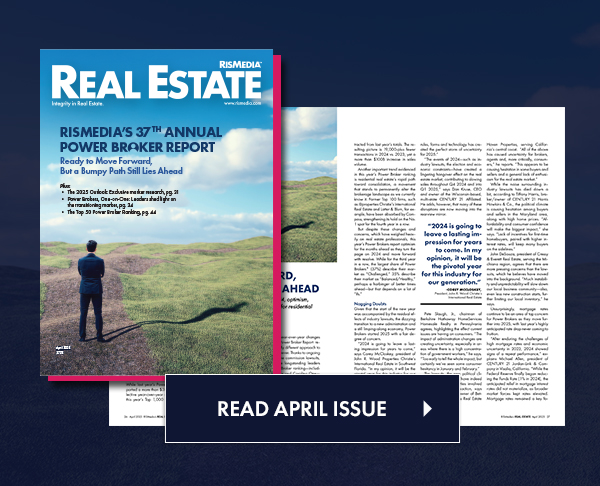The Consumer Price Index (CPI) saw another rise last month, up 0.3% in January after rising 0.2% in December, according to the latest data released by the U.S. Bureau of Labor Statistics Tuesday. Over the last 12 months, the all items index increased 3.1% before seasonal adjustment, the data showed.
The index for shelter continued to rise in January, increasing 0.6% and contributing over two thirds of the monthly all items increase. The food index increased 0.4% in January, as the food at home index increased 0.4% and the food away from home index rose 0.5% over the month.
In contrast, the energy index fell 0.9% over the month due in large part to the decline in the gasoline index.
The index for all items less food and energy rose 0.4% in January. Indexes which increased in January include shelter, motor vehicle insurance, and medical care. The index for used cars and trucks and the index for apparel were among those that decreased over the month.
The all items index rose 3.1% for the 12 months ending January, a smaller increase than the 3.4% increase for the 12 months ending December. The all items less food and energy index rose 3.9% over the last 12 months, the same increase as for the 12 months ending December. The energy index decreased 4.6% for the 12 months ending January, while the food index increased 2.6% over the last year.
The index for all items less food and energy rose 0.4% in January. The shelter index increased 0.6% in January, and was the largest factor in the monthly increase in the index for all items less food and energy. The index for owners’ equivalent rent rose 0.6% over the month, while the index for rent increased 0.4%. The lodging away from home index increased 1.8% in January.
What the experts are saying:
“The desired inflation is 2%, and the latest rise of 3.1% consumer price index in January is not yet comfortable,” said NAR Chief Economist Lawrence Yun. “One big source of stubbornness to further calmness is that housing shelter inflation is rising at 6%. That’s a bit of a mystery since apartment rents are no longer rising and single-family rent growth is at low single-digits. Home price is considered as an asset (like a stock price) and is not part of the inflation measurement. The Federal Reserve will not cut interest rates in the first half of this year, in my view. But rate cuts of 3, 4, or even 5 rounds will be possible in the second half of the year as rent measures will be much more well behaved. Mortgage rates will be bouncy week-to-week but will most likely settle towards 6% by the year end.”
Realtor.com Chief Economist Danielle Hale commented:
“The Consumer Price Index (CPI) rose 0.3% in January, up from 0.2% in December. Nevertheless, the annual inflation rate slid to 3.1%, on par with some of the lowest annual inflation readings observed in 2023, and down from December’s 3.4%. Shelter inflation—costs for housing and rent driven by home price and rental trends—continue to be the biggest driver of higher overall costs while energy price declines help to offset their sting. Perhaps more importantly for detecting underlying inflation pressures, “Core” inflation — a measure that strips out volatile food and energy prices – steadied at 3.9% in January as the monthly rate of change ticked up to 0.4% from 0.3%.
“In the conference following the January Fed meeting, Chair Powell explicitly acknowledged that the Federal Funds rate “is likely at its peak.” He also noted that, although rate cuts are expected in 2024 by the typical Federal Open Market Committee member, the committee was unlikely to have sufficient confidence to begin cutting rates in March. Today’s inflation data affirm the Fed’s ‘wait and see’ approach. Alongside the blockbuster job growth seen in January, today’s inflation data show that improvement is driven by what could be temporary phenomena, but price growth is stickier in services and shelter, keeping core inflation above target,” Hale concluded.
Shelter costs continued to ease, but rose 6.0% over this time last year. Shelter costs are down from a peak of 8.2% in March 2023, but increases of just 3.5% were consistent with on-target inflation historically. Notably, monthly shelter prices were up 0.6% on a seasonally adjusted basis, up from 0.4% in December, and their highest monthly jump since September 2023. As market asking rents ease, as they’ve done for the past 8 months, they will pass through to shelter costs and remove some of the pressure on overall inflation. With additional weakness forecast for the rental market in 2024, I expect we’ll see more meaningful relief in late-spring or summer, around the time I expect the Fed to begin easing its policy rate.
For the housing market, today’s data means that mortgage rates are likely to hang on to the narrow range they’ve occupied since late December, while likely moving toward the upper end of that range. The welcome stability of rates in recent weeks has offered some relief for home shoppers, a sharp contrast to the volatility of 2023, and should support more home sales. Even so, it’s a good idea for home shoppers to prepare for a range of mortgage rates by leveraging tools like online mortgage calculators to test out different scenarios, as the relative steadiness of the weekly mortgage rate data can mask stronger volatility from day to day.”
To see the full report, click here.












